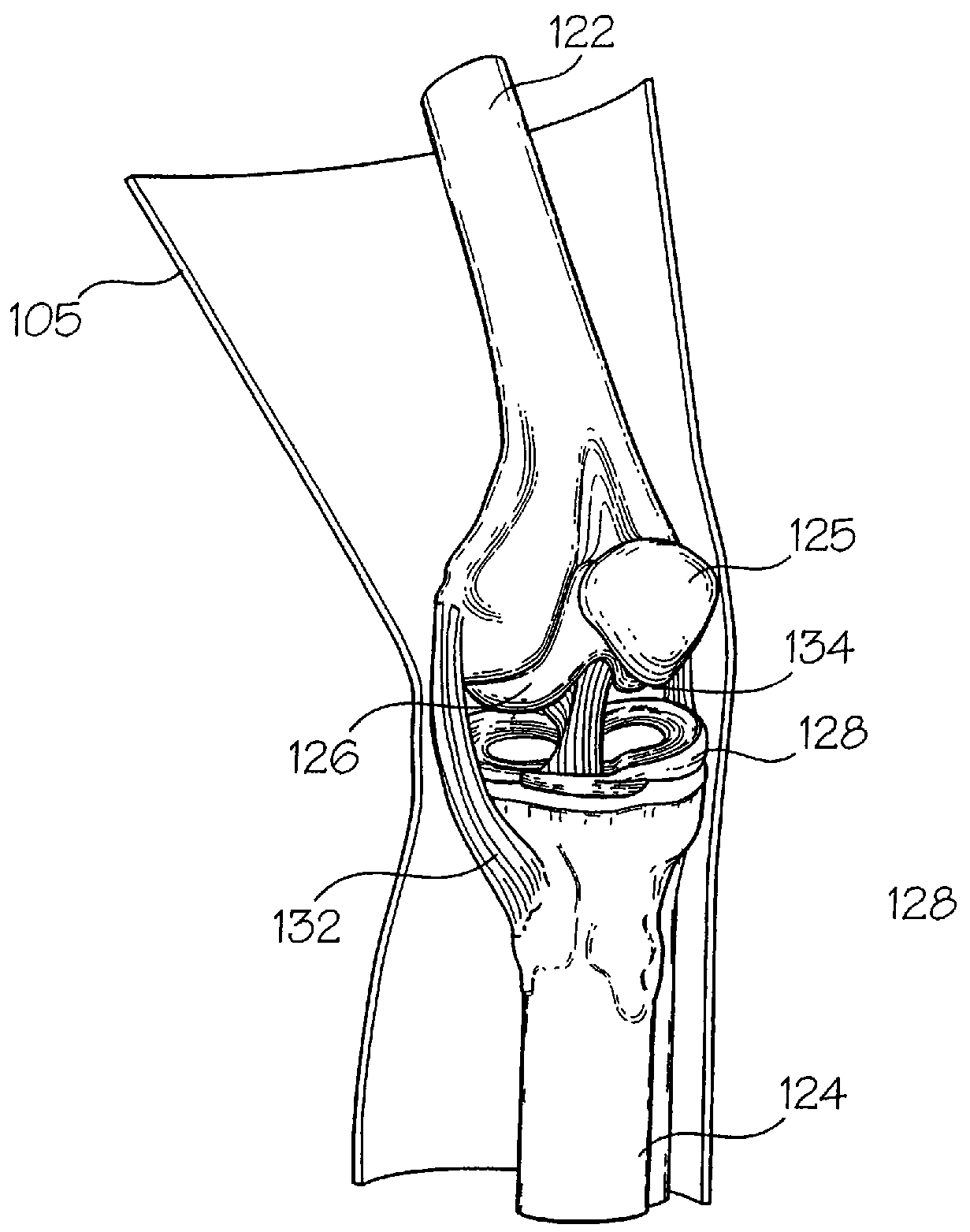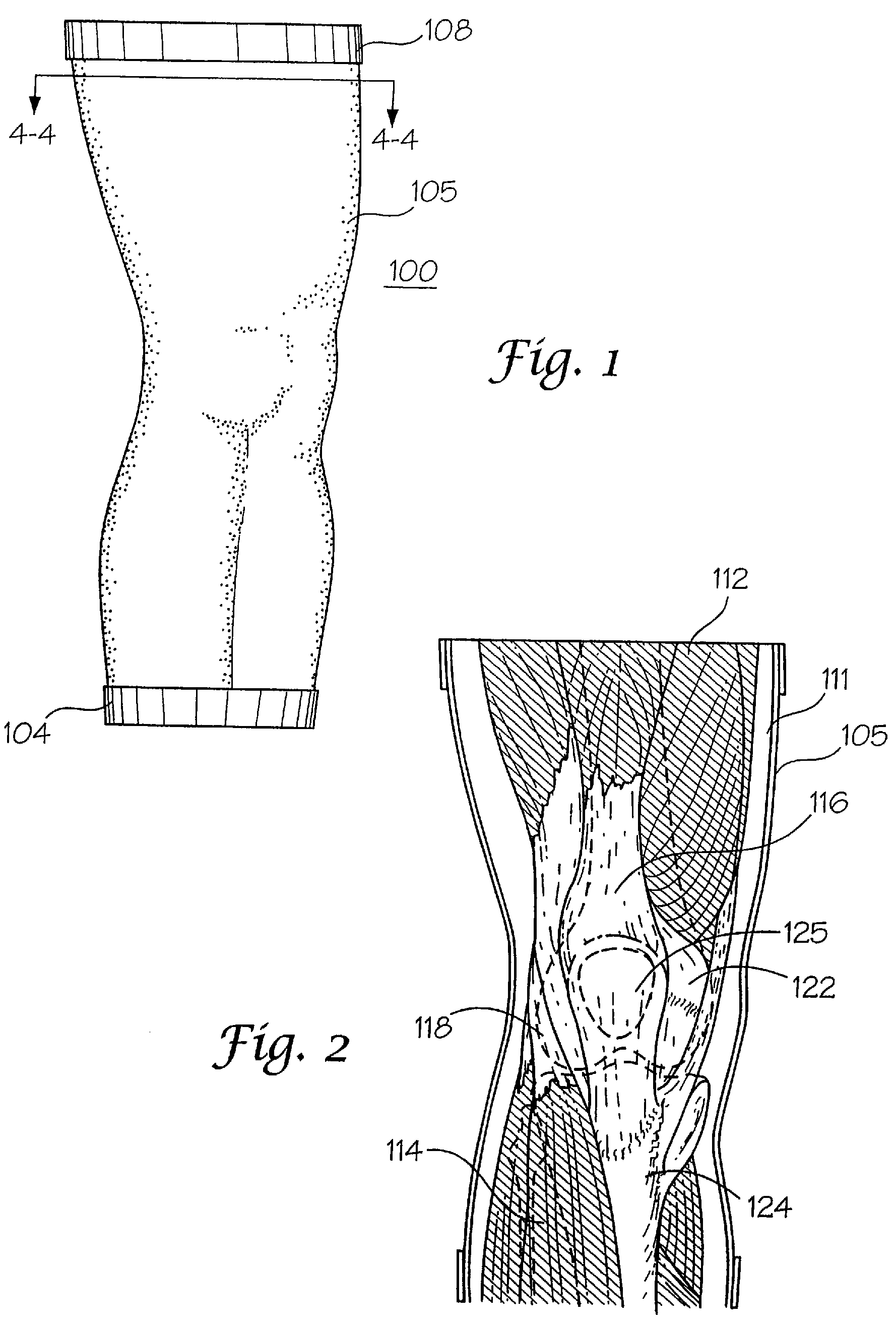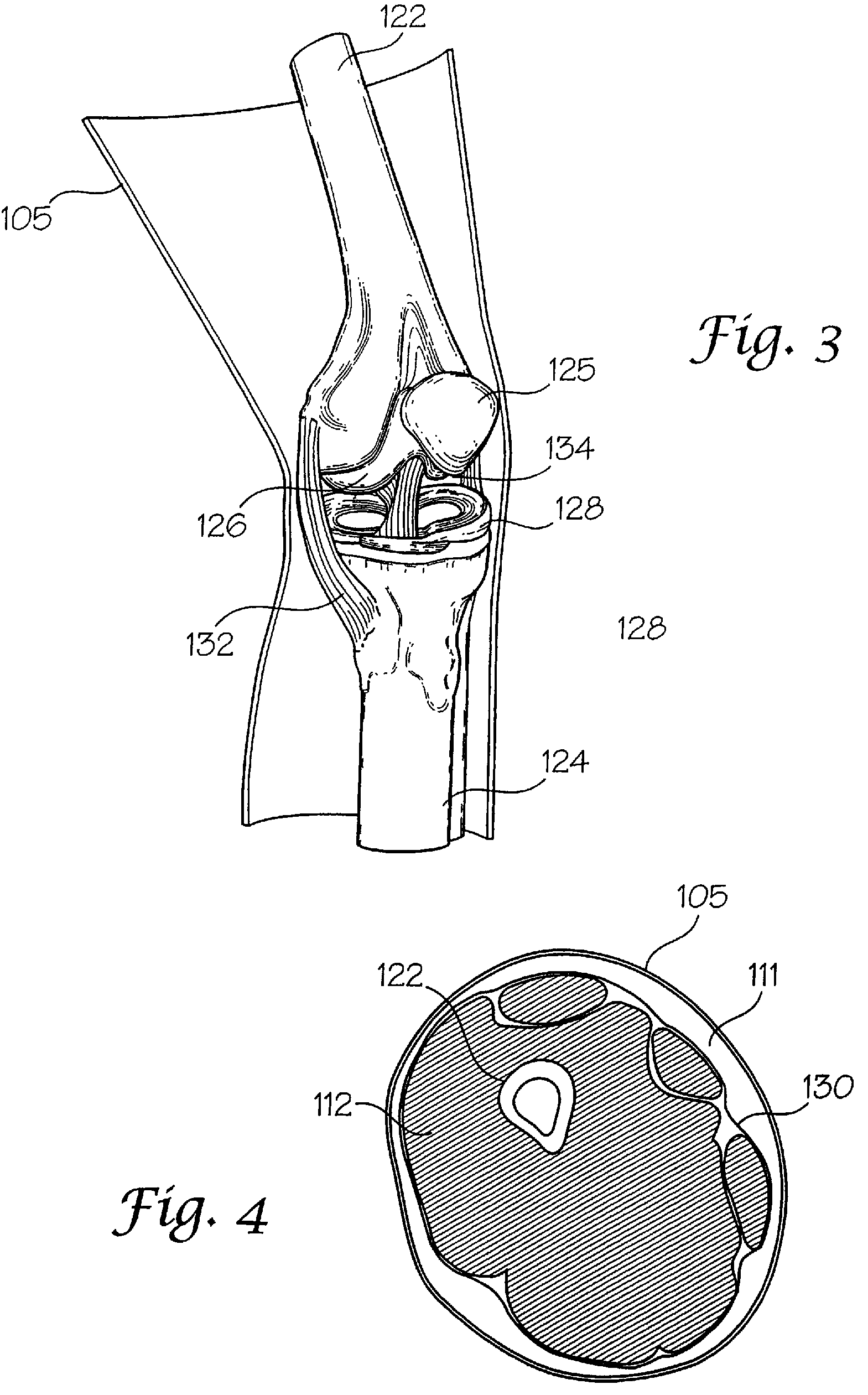Joint replica models and methods of using same for testing medical devices
a technology of replica models and medical devices, applied in the field of joint replica models and methods of using same for testing medical devices, can solve the problems of difficult quantitatively describing a device, general complexity of models that are needed, and limited models, so as to reduce product quality, increase development costs, and prolong product timeliness
- Summary
- Abstract
- Description
- Claims
- Application Information
AI Technical Summary
Benefits of technology
Problems solved by technology
Method used
Image
Examples
Embodiment Construction
[0073]The interaction of a foreign body with living tissues results in complications that are related to, among other things, shear forces, normal forces, abrasive action, blunt trauma, pressure necrosis, or other physical insults caused by the invading device. Not only are studies to predict the long-term effect of this invasion difficult and expensive to conduct, but when live patients are involved the studies often yield inconclusive results. As an alternative to using these patients, a bench top model may be employed to physically simulate the insult to the tissue as a relatively inexpensive, easily repeatable, and logical first step before resorting to animal studies and clinical trials. However, for this approach to be productive, the model employed must be representative of the actual target anatomy in which the medical device will normally be used.
[0074]The subject invention pertains to complex synthetic joint replica models that are designed to enable simulated use testing ...
PUM
 Login to View More
Login to View More Abstract
Description
Claims
Application Information
 Login to View More
Login to View More - R&D
- Intellectual Property
- Life Sciences
- Materials
- Tech Scout
- Unparalleled Data Quality
- Higher Quality Content
- 60% Fewer Hallucinations
Browse by: Latest US Patents, China's latest patents, Technical Efficacy Thesaurus, Application Domain, Technology Topic, Popular Technical Reports.
© 2025 PatSnap. All rights reserved.Legal|Privacy policy|Modern Slavery Act Transparency Statement|Sitemap|About US| Contact US: help@patsnap.com



